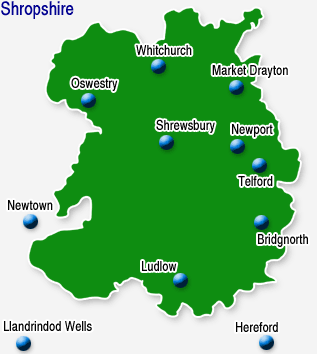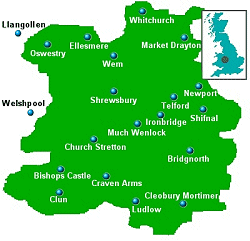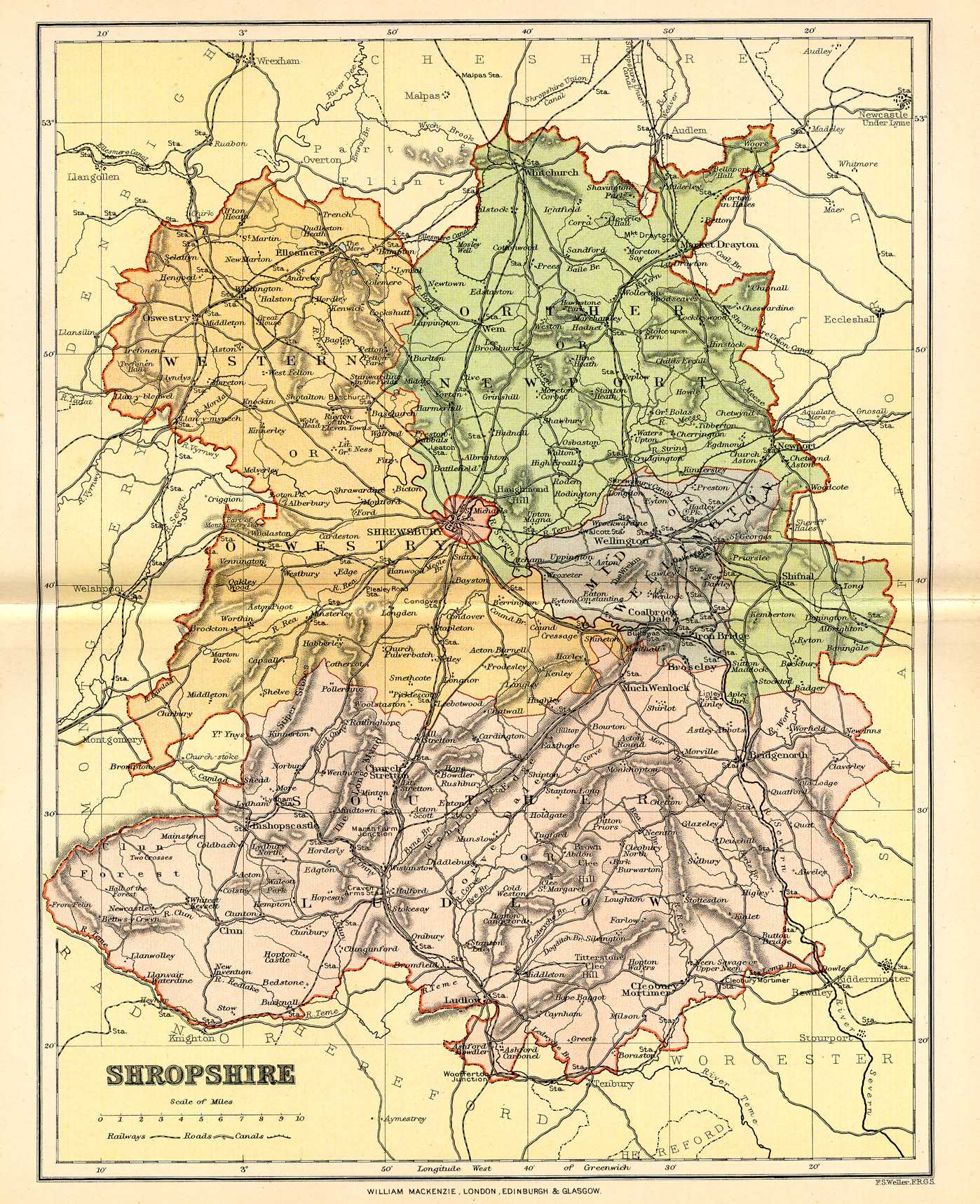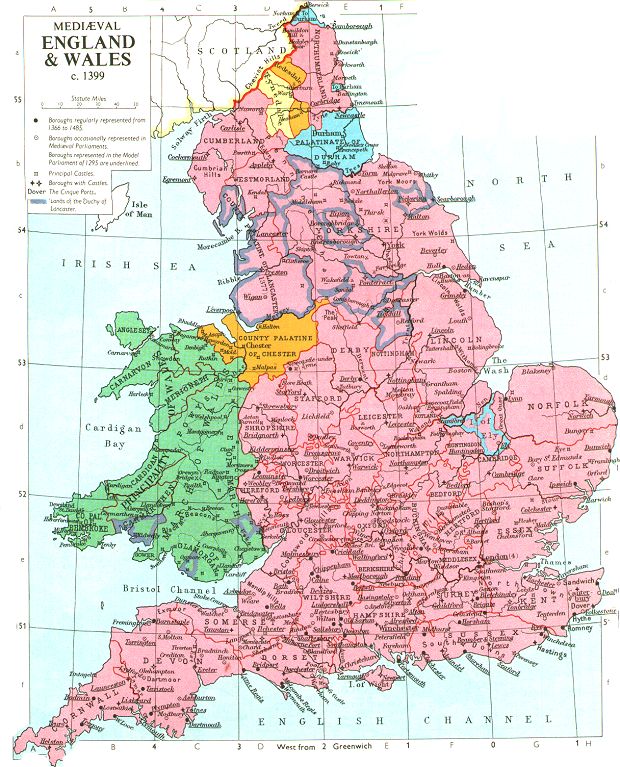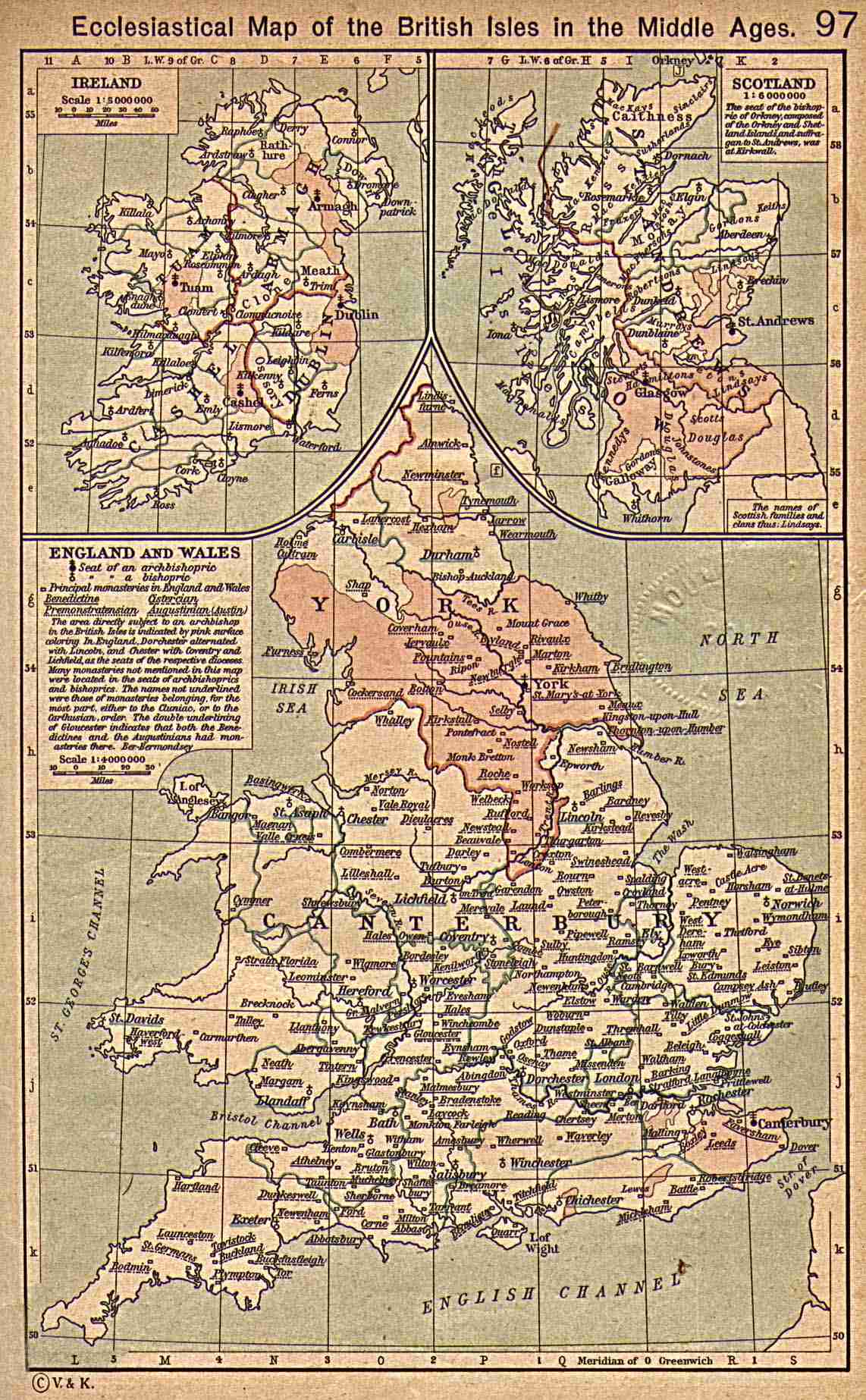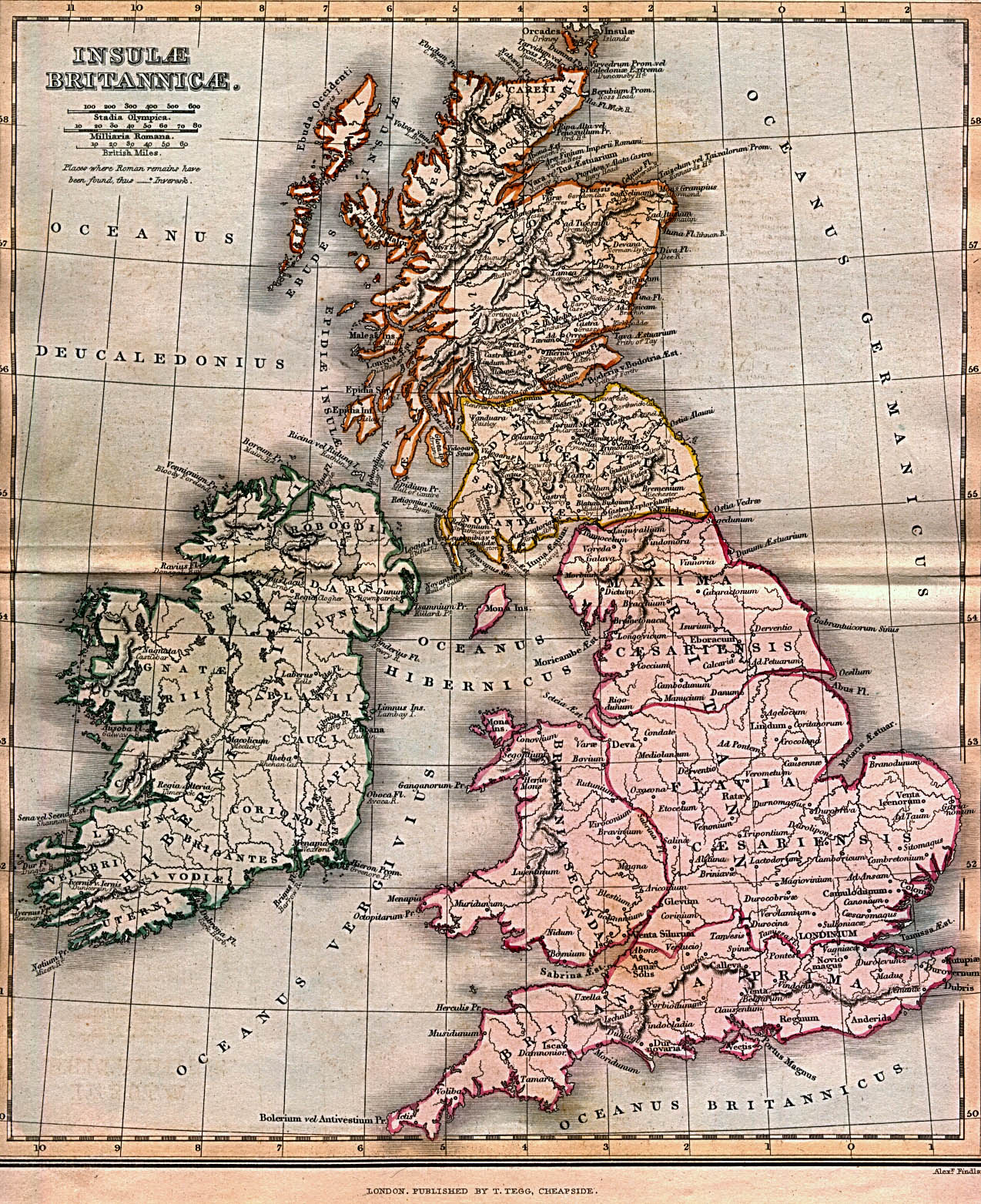The Setting
From Ars Magica
Ars Magica (Talk | contribs) (→Maps of all or part of Britain) |
Ars Magica (Talk | contribs) (Formatted the reign information for the monarchs into a table.) |
||
| Line 1: | Line 1: | ||
| + | ---- | ||
==Where are we?== | ==Where are we?== | ||
| Line 14: | Line 15: | ||
The Long Mynd, or 'Long Mountain', is a ridge of high ground in South Shropshire, running roughly SW to NE, and extending some 15 km. (9 miles/3 leagues) in length, between the Stiperstones to the west, and Wenlock Edge to the east. The rock is pre-Cambrian, though not as old as the volcanic rock of the Stretton hills (Lawley, Caradoc and Ragleth) to the east. The highest point is Pole Bank, 516m. (1693 ft.) above sea level. An ancient track, the Portway, runs along the top of the ridge. | The Long Mynd, or 'Long Mountain', is a ridge of high ground in South Shropshire, running roughly SW to NE, and extending some 15 km. (9 miles/3 leagues) in length, between the Stiperstones to the west, and Wenlock Edge to the east. The rock is pre-Cambrian, though not as old as the volcanic rock of the Stretton hills (Lawley, Caradoc and Ragleth) to the east. The highest point is Pole Bank, 516m. (1693 ft.) above sea level. An ancient track, the Portway, runs along the top of the ridge. | ||
| + | |||
| + | ---- | ||
==Geological Information== | ==Geological Information== | ||
| Line 20: | Line 23: | ||
From: 'Church Stretton', A History of the County of Shropshire: Volume 10: Munslow Hundred (part), The Liberty and Borough of Wenlock (1998), pp. 72-120. URL: http://british.history.ac.uk/report.asp?compid=22861. Date accessed: 26 January 2006. | From: 'Church Stretton', A History of the County of Shropshire: Volume 10: Munslow Hundred (part), The Liberty and Borough of Wenlock (1998), pp. 72-120. URL: http://british.history.ac.uk/report.asp?compid=22861. Date accessed: 26 January 2006. | ||
| + | |||
| + | ---- | ||
== Shrewsbury - 13th Century History == | == Shrewsbury - 13th Century History == | ||
| Line 41: | Line 46: | ||
During the 13th century there was frequent warfare between the English and the Welsh. Shrewsbury was, obviously, in the front line because of its position. In 1215 Shrewsbury was captured by the Welsh under their leader Llewelyn the Great. However the Welsh only held the town for a short time. Nevertheless warfare between the English and the Welsh continued through the 13th century. | During the 13th century there was frequent warfare between the English and the Welsh. Shrewsbury was, obviously, in the front line because of its position. In 1215 Shrewsbury was captured by the Welsh under their leader Llewelyn the Great. However the Welsh only held the town for a short time. Nevertheless warfare between the English and the Welsh continued through the 13th century. | ||
| + | |||
| + | ---- | ||
== The County of Shropshire == | == The County of Shropshire == | ||
| Line 65: | Line 72: | ||
[[Image:Shropshire.jpg|center|thumb|500px|Click for an excellent, very high resolution map. n.b. hills are heavily stylised.]]<br> | [[Image:Shropshire.jpg|center|thumb|500px|Click for an excellent, very high resolution map. n.b. hills are heavily stylised.]]<br> | ||
| + | |||
| + | ---- | ||
== Maps of all or part of Britain == | == Maps of all or part of Britain == | ||
<small>Click on the following thumbnails for full-size versions. The largest files will present you with an intermediate-size thumbnail, and the option of downloading the very high resolution version of the picture.</small> | <small>Click on the following thumbnails for full-size versions. The largest files will present you with an intermediate-size thumbnail, and the option of downloading the very high resolution version of the picture.</small> | ||
| Line 76: | Line 85: | ||
== Random Notes == | == Random Notes == | ||
| - | PLANTAGENETS < | + | {| border=2 | |
| - | Henry II 1154-1189 | + | | colspan=3 bgcolor=gray | <font color=white><center><b>PLANTAGENETS</b></center> |
| - | Richard I 1189-1199 | + | |- |
| - | John 1199-1216 | + | | bgcolor=gray | <font color=white><center><b>Monarch</b></center> |
| - | Henry III 1216-1272 | + | | bgcolor=gray | <font color=white><center><b>Reign</b></center> |
| - | Edward I 1272-1307 | + | | bgcolor=gray | <font color=white><center><b>Date that regnal year commences.</b></center> |
| - | Edward II 1307-1327 | + | |- |
| - | Edward III 1327-1377 Regnal year | + | |Henry II |
| + | |1154-1189 | ||
| + | |19th December, 1154 | ||
| + | |- | ||
| + | |Richard I | ||
| + | |1189-1199 | ||
| + | |3 September, 1189 | ||
| + | |- | ||
| + | |John | ||
| + | |1199-1216 | ||
| + | |27th May, 1199 | ||
| + | |- | ||
| + | |Henry III | ||
| + | |1216-1272 | ||
| + | |28th October, 1216 | ||
| + | |- | ||
| + | |Edward I | ||
| + | |1272-1307 | ||
| + | |20th November, 1272 | ||
| + | |- | ||
| + | |Edward II | ||
| + | |1307-1327 | ||
| + | |8th July, 1307 | ||
| + | |- | ||
| + | |Edward III | ||
| + | |1327-1377 | ||
| + | |25th January, 1327 | ||
| + | |- | ||
| + | | colspan=3 |Regnal year is used in this period (from 1189) in civil documents and private charters in England. As an example, <i>1st January 1220</i> would be described as <i>1st January in the 4th Year of Henry III</i>. | ||
| + | |} | ||
| - | |||
POPES of the same time. | POPES of the same time. | ||
Revision as of 06:12, 16 February 2006
Contents |
Where are we?
The game begins with the players and their retinue arriving at an inn in the small village of Little Stretton.
Little Stretton, Church Stretton, and All Stretton, are three small settlements that form the manor of Stretton-en-le-Dale. The central and largest settlement, where the church was built, is the small market town of Church Stretton, some 19 km. (12 miles/4 leagues). south-southwest of Shrewsbury and 20 km. (12 1/2 miles/4 leagues) north-north-west of Ludlow. The village is dominated by the huge Long Mynd massif, which provides Church Stretton with both its views, and good, fresh spring water.
All the settlements lie near, but not on, the Roman road from Deva (Chester) via Viroconium Cornoviorum (Wroxeter) to Isca (Caerleon, Mon.) The road, itself known as Botte (Bot) Street, gave a name to the three Strettons, All Stretton apparently taking its particular name from one Alfred, the nature of whose connection with the settlement is not known.
Between Little Stretton and Church Stretton lies Brockhurst Hill, upon which a modest castle has been newly constructed to watch over the roman road.
The Long Mynd, or 'Long Mountain', is a ridge of high ground in South Shropshire, running roughly SW to NE, and extending some 15 km. (9 miles/3 leagues) in length, between the Stiperstones to the west, and Wenlock Edge to the east. The rock is pre-Cambrian, though not as old as the volcanic rock of the Stretton hills (Lawley, Caradoc and Ragleth) to the east. The highest point is Pole Bank, 516m. (1693 ft.) above sea level. An ancient track, the Portway, runs along the top of the ridge.
Geological Information
The parish's geology is almost entirely PreCambrian. The principal feature is the Church Stretton Fault running along the east side of the dale. East of the fault, broadly speaking, the hills are formed of what, apart from some small areas of schists near the Wrekin, are Shropshire's oldest rocks, the Uriconian volcanics: mainly Ragleth Tuffs, though Caer Caradoc's geology is complicated by Caer Caradoc Andesites and Cwms Rhyolites with intrusive igneous Dolerite. West of the fault the younger Longmyndian sedimentary rocks from the Long Mynd, their strata dipping almost vertically to the northwest, throwing up the Stretton Series of fine-grained siltstones and a thin band of Cardingmill Grit and, further west and beyond the parish boundary, the newer coarse-grained Wentnor Series; the higher parts of the Long Mynd are covered with head and, between All Stretton and Colliers Lye, areas of boulder clay. In the centre of the dale Longmyndian rocks are exposed on both sides of the fault so that Stretton Shales from the lowest slopes not only of the Long Mynd but also of Ragleth and Helmeth hills and the south-western slope of Caer Caradoc hill; on the western slopes of the eastern hills, though not on the Long Mynd, Helmeth Grit, oldest of the Longmyndian rocks, appears from beneath the Stretton Shales. Small areas at the south end of Ragleth hill (around Wiresytch coppice) and at the eastern end of Minton township (around Queensbatch mill and Marshbrook) are Ordovician: Caradoc shales, flags, and sandstone. The floor of the dale consists of glacial deposits of boulder clay overlying Silurian shales and limestone; some of those shales, of the Llandovery and Wenlock Series, are exposed in the southern part of the dale, particularly around Minton. There are alluvial deposits along the courses of the streams and, here and there, islands of sand and gravel. Coal Measures have been encountered near Botvyle.
From: 'Church Stretton', A History of the County of Shropshire: Volume 10: Munslow Hundred (part), The Liberty and Borough of Wenlock (1998), pp. 72-120. URL: http://british.history.ac.uk/report.asp?compid=22861. Date accessed: 26 January 2006.
Shrewsbury - 13th Century History
SHREWSBURY IN THE MIDDLE AGES
Shrewsbury began as a Saxon settlement. It was first mentioned in the year 901. Its place name ending 'bury' showed it was once a fortified settlement called a burgh.(The Saxons created a network of fortified settlements across England). Shrewsbury was probably protected by a ditch with an earth rampart and a wooden stockade. In the 10th century Shrewsbury had a mint so it must have been a fairly important place. At the time of the Domesday Book in 1086 Shrewsbury probably had a population of about 1200. It would seem tiny to us but towns were very small in those days.
The Normans built a wooden fort at Shrewsbury. However in 1069 a rebellion occurred and the rebles laid siege to the fort. When Norman reinforcements arrived the rebels set the town alight then fled. Although part of Shrewsbury burned the town soon recovered. (Fire, whether deliberate or accidental was a constant hazard in the Middle Ages when most buildings were of wood with thatched roofs. On the other hand if they burned down they could easily be rebuilt).
Shrewsbury Abbey was founded in 1083 by Roger de Montgomery the first Earl of Shrewsbury. The same man built a castle in Shrewsbury to replace the rough wooden fort.
In the Middle Ages Shrewsbury flourished. By the 12th century it had 2 bridges. In the early 12th century King Henry I gave Shrewsbury a charter (a document granting the townspeople certain rights). King Richard I gave Shrewsbury a 2nd charter in 1189. In the 13th century stone walls were built around Shrewsbury.
By the 14th century Shrewsbury probably had a population of about 3,000. To us it would seem no more than a village but by medieval standards it was a fair sized town.
There was an important leather industry in Shrewsbury. There were skinners and tanners in the town as well as shoemakers and glovers. In the late Middle Ages Shrewsbury grew prosperous on the Welsh wool and flax trade. There were many drapers and tailors in Shrewsbury.
In the 13th century friars arrived in Shrewsbury. (Friars were like monks but instead of withdrawing from the world they went out to preach and help the poor). Franciscan friars were called grey friars because of their grey costumes. Dominican friars were called black friars. There were also Austin friars in Shrewsbury.
During the 13th century there was frequent warfare between the English and the Welsh. Shrewsbury was, obviously, in the front line because of its position. In 1215 Shrewsbury was captured by the Welsh under their leader Llewelyn the Great. However the Welsh only held the town for a short time. Nevertheless warfare between the English and the Welsh continued through the 13th century.
The County of Shropshire
The History of Shropshire
History of Shropshire from the 1911 Encyclopaedia Britanica
Locations in Shropshire
Information garnered from various modern sources about the area of the time of the campaign.
Maps of Shropshire
This page has a selection of maps, as a basis for discussions about the location of the game. Some maps show castle locations (where there are castles, there are bothersome nobles), roads (nosy passersby), roman-latin nomenclature, etc.
A map of just Shropshire, showing Shrewsbury and the Strettons
Maps of all or part of Britain
Click on the following thumbnails for full-size versions. The largest files will present you with an intermediate-size thumbnail, and the option of downloading the very high resolution version of the picture.
Random Notes
| | ||
| | | |
| Henry II | 1154-1189 | 19th December, 1154 |
| Richard I | 1189-1199 | 3 September, 1189 |
| John | 1199-1216 | 27th May, 1199 |
| Henry III | 1216-1272 | 28th October, 1216 |
| Edward I | 1272-1307 | 20th November, 1272 |
| Edward II | 1307-1327 | 8th July, 1307 |
| Edward III | 1327-1377 | 25th January, 1327 |
| Regnal year is used in this period (from 1189) in civil documents and private charters in England. As an example, 1st January 1220 would be described as 1st January in the 4th Year of Henry III. | ||
POPES of the same time.
Anastasias IV. 1153-1154
Adrian V 1154-1159
Alexander III 1159-1181
(Victor IV 1159-1164
(Paschal III 1164-1168
(Calixtus III 1168-resigned 1178
(Innocent III 1179; deposed 1180
Lucius III 1181-1185
Urban III 1185-1187
Gregory VIII 1187-1187
Clement III 1187-1191
Celestine III 1191-1198
Innocent III 1198-1216
Honorius III 1216-1227 d.18 March 1227
Gregory IX 1227-1241
Celestine IV 1241-1241
Innocent IV 1243-1254
Alexander IV 1254-1261
Urban IV 1261-1264
Clement IV 1265-1268
Gregory X 1271-1276
Innocent V 1276-1276
Adrian V 1276-1276
John XXI 1276-1277
Nicholas III 1277-1280
Martin IV 1281-1285
Honorius IV 1285-1287
Nicholas IV 1288-1292
Celestine V 1294-resigned 1294
Boniface VIII 1294-1303
Benedict XI 1303-1304
Clement V 1305-1314
John XXII 1316-1334
